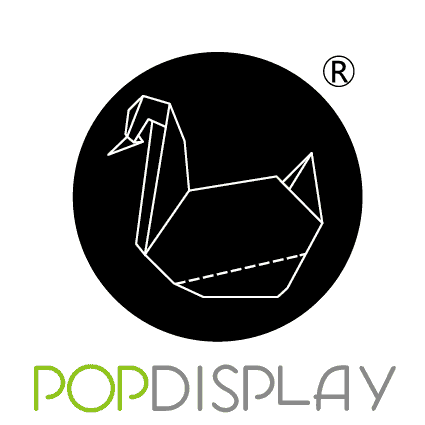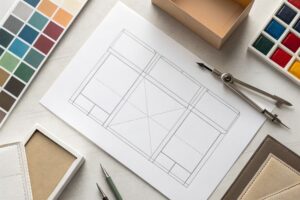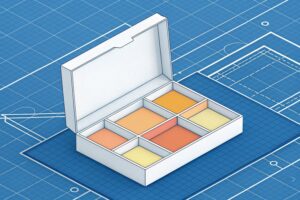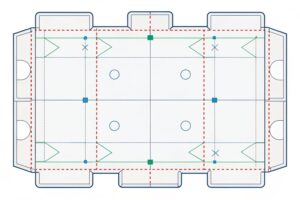What makes display packaging effective in retail?

Shoppers move fast; boring packaging vanishes in a blink. When displays fail, sales slide. A smart, branded box can stop that rush and pull customers toward my product.
Effective display packaging grabs attention, communicates value in seconds, protects the item, guides placement, and fits retail logistics, resulting in higher pickup rates and faster sales.
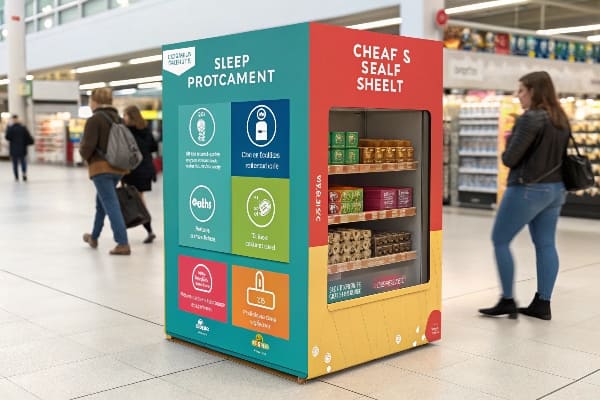
Stay with me; I will unpack the design choices that turn a plain carton into a quiet but powerful sales rep.
How do you make a good retail display?
A messy shelf is a problem. It hides good products and stresses buyers. When I miss the right structure, my message is lost. A clear, strong design fixes this fast.
A good retail display uses strong board, brand-matched colors, logical tiers, clear graphics, and tool-free assembly, so staff can set it up fast and shoppers can read it at a glance.
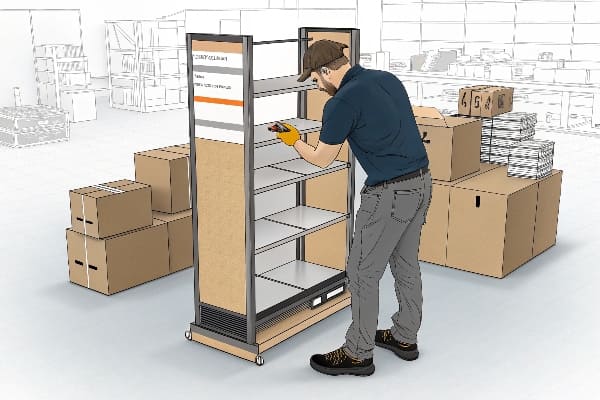
My six-step build plan
| Step | Goal | Action | Tip |
|---|---|---|---|
| 1 | Catch the eye | Use one hero color from the brand palette | Limit palette to three hues |
| 2 | Signal value | Add a short benefit line at the top edge | Keep text under eight words |
| 3 | Support weight | Choose double-wall flute1 for heavy items | Test with 20 % extra load |
| 4 | Guide the hand | Angle the tray at 15° | Works for crossbows and candy alike |
| 5 | Speed set-up | Slot-lock tabs, no tools | Save labor at store level |
| 6 | Recycle easy | Print recycling icon2 on back | Retailers notice sustainability |
A display starts on my screen as a flat dieline. I fold it in mind and think like the store clerk. Will it pop open without tearing? Will the crossbow bolts sit straight? Next, I think like the shopper. My eyes travel top to bottom in one second. The headline must promise gain, not features. Then the call-out arrow pushes the hand toward the grip area. I keep files in CMYK to avoid color drift. I send a PDF proof to the buyer, then a 3D render. My factory in Guangzhou laser-cuts a white sample overnight, and the crew scores every fold line so edges stay crisp. I drop a twenty-five-kilogram sandbag inside, because hunting gear is heavy. If it bows, I add a support rib. That rib costs two cents but saves the order. When the client signs off, I print, crease, and glue at six thousand units per hour. The packed blanks ship flat, twenty kilograms per stack, which cuts freight. At the store, staff pulls a string, the header rises, and the tray locks. Setup takes ninety seconds. Sales teams notice and they smile. A good display removes pain from everyone in the chain, from the line worker who stacks pallets to the shopper who lifts the product.
Why is product display important in retail store?
Many stores fight for shopper focus. When products hide on a plain shelf, they become invisible. If my display fails, money sits in silence. A standout structure solves that pain.
Product display controls visibility, brand story, and perceived value; it steers traffic inside the aisle and turns passive stock into active sales opportunities, lifting conversion without extra ad spend.
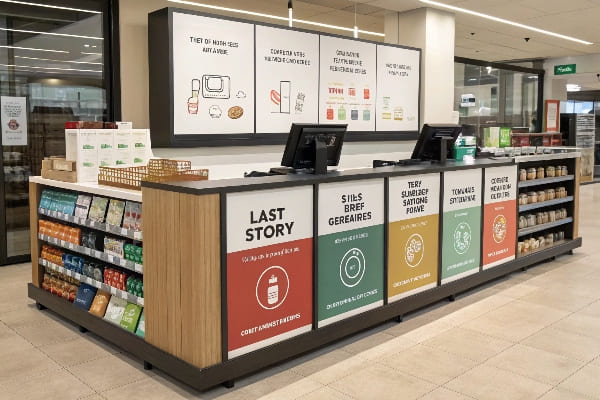
The three value layers
| Layer | Shopper Impact | Retailer Benefit |
|---|---|---|
| Visual | Stops the eye within three feet | Higher foot traffic in aisle |
| Informational | Answers “why buy” in one sentence | Fewer staff questions |
| Functional | Holds and dispenses safely | Lower shrink and returns |
The visual layer3 sparks instinct. Bold color blocks and sharp contrast pull eyes out of clutter. I often borrow cues from outdoor gear—matte camo green, orange trim—so hunters feel at home. My stand for Barnett Outdoors used deep forest tones and a full-bleed photo of a deer stand at dawn. That single image triggered memories in shoppers and brought them closer. The informational layer4 then does quiet work. I print one headline, a bullet of five words, and a QR code that opens a thirty-second setup video. This short answer builds trust without forcing a staff member to hover. The functional layer5 seals the deal. Crossbow trays have EVA foam cradles, so limbs do not scratch. Units stay sellable, and buyers feel safe lifting them out. Retail managers judge value by how much work I remove from their routine. When they see strong corrugate edges, clean die-cuts, and logical replenishment paths, they say yes. One chain in Texas reported a twenty-eight percent lift in four weeks after switching to my cardboard stands. No coupon, no influencer; the display alone carried the load. That data fuels my next design and proves why product display is a core driver, not decoration.
What is display ready packaging?
Traditional cartons stay hidden in back rooms. That wastes labor and time. With DRP, staff opens a flap and the goods are live. Slow restocks vanish.
Display ready packaging is a shipping carton engineered to convert into a shelf-ready display in seconds, combining transit protection with immediate merchandising to save labor and speed replenishment.

Anatomy of DRP
| Part | Purpose | Best Practice |
|---|---|---|
| Tear strip | Creates clean front window | Use zig-zag perforation6 for straight rip |
| Header panel | Adds branding height | Pre-score for easy pop-up |
| Inner trays | Organize units | Fit SKUs snugly, 2 mm clearance |
| Color coding | Aid stock crew | Pantone match to planogram zone |
I learned the hard way during a 2019 rollout for a pharmacy chain. The crew sliced open my boxes with box-cutters and scratched half the blister packs. We lost shelf appeal and had to rework the order. After that, I designed a finger-pull strip7 that peels by hand and reveals a crisp factory edge. I also printed large arrows showing the pull direction. The next shipment took minutes to deploy, and no damage appeared. Labor logs showed a forty-percent cut in restock time. For heavy hunting goods, I add moisture-resistant varnish8 because stores sometimes stage pallets in damp corridors. My transport tests run on a shaker table for three hours at 60 Hz and ten Gs. If the inner dividers walk, I adjust slot tightness. DRP must protect goods for 1,500 miles on trucks and still look fresh. When the outer flap folds under, it becomes a price rail, and staff inserts a UPC tag into a slit I pre-cut. They love that small touch; it makes pricing error-free. Good DRP respects every hand that touches it, from the driver who lifts the pallet to the shopper who lifts the product.
Why is displaying merchandise important?
A product left in dark earns nothing. I paid that price. When I place items in daylight with a clear story, revenue jumps. Displaying is not extra; it is core.
Displaying merchandise secures attention, builds desire, and guides decision, turning stocked inventory into active revenue while reinforcing brand identity and shopper trust at the critical point of choice.
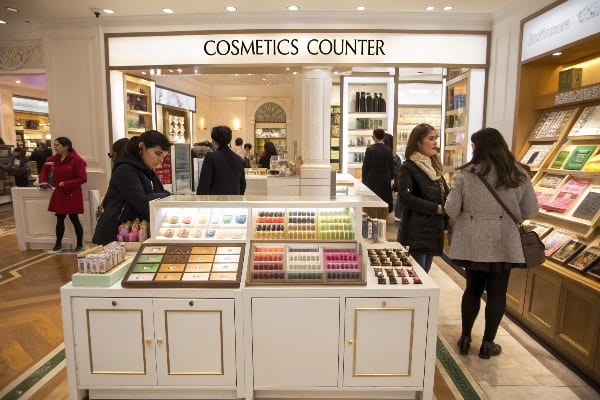
Display as silent salesperson
| Role | Display Action | Result |
|---|---|---|
| Greeter | Uses bold header and inviting image | Shopper stops |
| Educator | Lists top benefit in five words | Shopper understands |
| Closer | Shows price, QR for reviews | Shopper commits |
A display speaks when I am not there. It greets with color, educates with icons, and closes with proof. I often print a small badge—“Lifetime Warranty9”—in the bottom corner. That badge cuts doubt. I add a tiny story: “Designed in Texas, tested in the Rockies10.” People buy stories, not specs. I learned this at a trade show in Denver. Two stands held new crossbows side by side. One listed draw weight and speed. The other showed a dawn hunt photo and a line that read “Quiet power when light breaks.” The second outsold the first three to one. The structure was identical; the story changed everything. A display must also respect store lighting. Gloss lamination can glare under LED strips, so for bolt packs I use a soft-touch film11 that keeps details visible. Material choice is story choice. When merchandise talks right, staff field fewer questions, returns fall, and the brand feels alive. Every square inch of board then earns its place, just like a trained salesperson.
Conclusion
Effective display packaging works like a silent salesperson: it captures eyes, answers questions, protects stock, speeds staff, and converts quick glances into reliable sales across every retail aisle.
Explore this link to understand how double-wall flute enhances packaging strength and supports heavy items effectively. ↩
Learn why incorporating a recycling icon can boost sustainability perception and attract eco-conscious consumers. ↩
Understanding the visual layer can enhance your retail strategy, attracting more customers and increasing sales. ↩
Exploring the informational layer can help you create effective messaging that resonates with customers and builds trust. ↩
Learning about the functional layer can improve product safety and reduce returns, enhancing overall customer satisfaction. ↩
Discover how zig-zag perforation can improve the efficiency and aesthetics of packaging, making it easier to open and more appealing. ↩
Explore this link to understand how finger-pull strips enhance packaging usability and prevent damage during handling. ↩
Learn about the advantages of moisture-resistant varnish in packaging, especially for products stored in damp environments. ↩
Exploring this link will reveal how a Lifetime Warranty can enhance customer trust and boost sales. ↩
This resource will show you the power of storytelling in marketing and its effect on sales. ↩
Learn about the advantages of soft-touch film for product visibility and customer engagement. ↩
